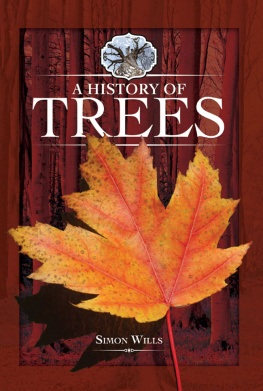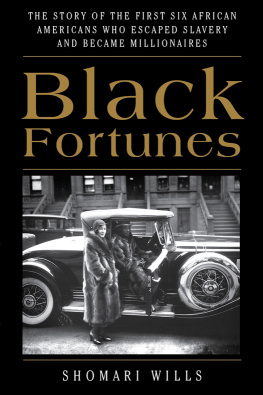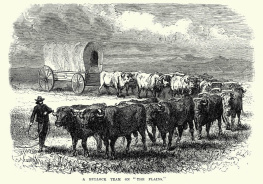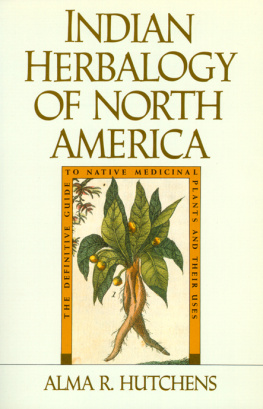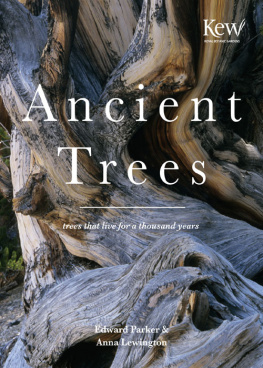Wills - A History of Trees
Here you can read online Wills - A History of Trees full text of the book (entire story) in english for free. Download pdf and epub, get meaning, cover and reviews about this ebook. City: Havertown, year: 2018, publisher: Pen & Sword Books Limited, genre: Religion. Description of the work, (preface) as well as reviews are available. Best literature library LitArk.com created for fans of good reading and offers a wide selection of genres:
Romance novel
Science fiction
Adventure
Detective
Science
History
Home and family
Prose
Art
Politics
Computer
Non-fiction
Religion
Business
Children
Humor
Choose a favorite category and find really read worthwhile books. Enjoy immersion in the world of imagination, feel the emotions of the characters or learn something new for yourself, make an fascinating discovery.
A History of Trees: summary, description and annotation
We offer to read an annotation, description, summary or preface (depends on what the author of the book "A History of Trees" wrote himself). If you haven't found the necessary information about the book — write in the comments, we will try to find it.
A History of Trees — read online for free the complete book (whole text) full work
Below is the text of the book, divided by pages. System saving the place of the last page read, allows you to conveniently read the book "A History of Trees" online for free, without having to search again every time where you left off. Put a bookmark, and you can go to the page where you finished reading at any time.
Font size:
Interval:
Bookmark:

A History of Trees
To Max, who particularly likes trees to hide behind.

Simon Wills

First published in Great Britain in 2018 by
Pen & Sword White Owl
an imprint of
Pen & Sword Books Ltd
47 Church Street
Barnsley South Yorkshire
S70 2AS
Copyright Simon Wills 2018
ISBN 978 1 5267 0159 6
eISBN 978 1 5267 0161 9
Mobi ISBN 978 1526 7 0160 2
The right of Simon Wills to be identified as the Author of this Work has been asserted by him in accordance with the Copyright, Designs and Patents Act 1988.
A CIP catalogue record for this book is available from the British Library.
All rights reserved. No part of this book may be reproduced or transmitted in any form or by any means, electronic or mechanical including photocopying, recording or by any information storage and retrieval system, without permission from the Publisher in writing.
Pen & Sword Books Limited incorporates the imprints of Atlas,
Archaeology, Aviation, Discovery, Family History, Fiction, History, Maritime, Military,
Military Classics, Politics, Select, Transport,
True Crime, Air World, Frontline Publishing, Leo Cooper,
Remember When, Seaforth Publishing, The Praetorian Press,
Wharncliffe Local History, Wharncliffe Transport,
Wharncliffe True Crime and White Owl.
For a complete list of Pen & Sword titles please contact
PEN & SWORD BOOKS LIMITED
47 Church Street, Barnsley, South Yorkshire, S70 2AS, England
E-mail:
Website: www.pen-and-sword.co.uk
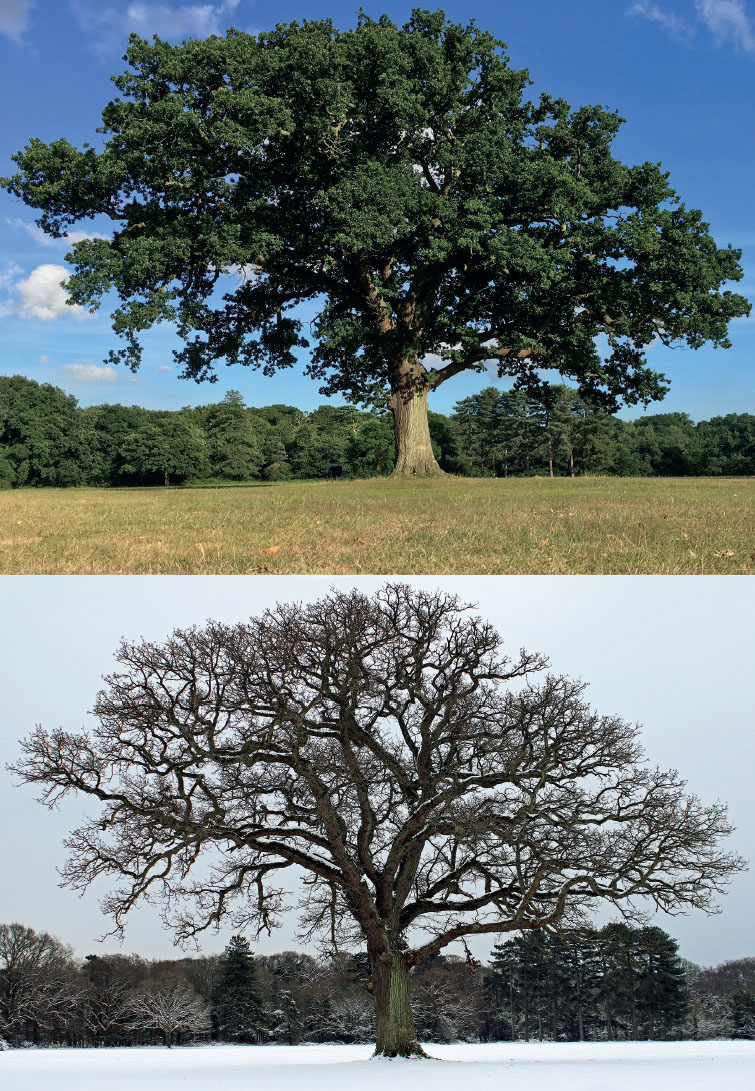
T rees and woodland have perhaps always had a special place in our psyche, maybe because we are apes and we know that we came from the trees. My interest in trees started as a child. My parents loved Badbury Rings in Dorset with its famous huge double avenue of beech trees, so we often went there, and I still think its wonderful. I was a determined tree climber too, and still have the wrist injury that resulted from a fall sustained about forty years ago.
Trees impress us because of their size, majesty, beauty and endurance. Many of them live to a greater age than we do, so it is possible to sit next to an elderly oak tree and ponder that it was standing throughout the reign of Queen Anne and when Nelson won at Trafalgar. And plenty of trees have witnessed even greater spans of history than this.
Trees also connect us with nature: they demonstrate the seasons very dramatically in the case of deciduous trees, they provide homes and food for multiple other organisms, and they are very visible and characteristic features of British gardens, parks, towns and countryside. In earlier centuries, when the countryside was bigger and more people lived and worked in it, the practical benefits of trees to everyday life were both more numerous and more obvious. Trees provided our ancestors with food, timber for construction, medicines, protection from the elements, boundary markers, creative inspiration, fuel, charcoal and folklore. One of our favourite national heroes, Robin Hood, lived in a forest, and certain trees were held to be sacred to the ancient druids or were believed to be inhabited by spirits and elves.
As a lover of trees, it has been difficult to decide which trees to include and which to leave out. The choice is to some extent dictated by the size of the book, which makes it impossible to include every British tree. However, I have tried to focus on trees that have an interesting tale to tell, and are common and familiar. Within the text I have, from time to time, described certain trees as being native and perhaps this term needs some explanation. Trees described as native are the ones that grew in the UK after the end of the last ice age while this country was still physically connected to mainland Europe; non-native trees are those that were brought here by humans at a later date. I have used the categorisation of native species promoted by the Woodland Trust ( www.woodlandtrust.org.uk ) as the basis for my use of this term.
Beyond their practical utility to us and our simple liking of them, trees form the great forests of the world, which are said to be the lungs of the planet. So trees, more than anything else, keep us alive.
M any websites now make original historical texts available freely to researchers and historians, and I would like to take this opportunity to thank them, and especially the following:
Complete Works of William Shakespeare: http://shakespeare.mit.edu/
Internet Archive: https://archive.org/
Early English Books Online: http://quod.lib.umich.edu/e/eebogroup/
Google Books: https://books.google.co.uk/
Perseus Digital Library: http://www.perseus.tufts.edu/hopper/
Project Gutenberg: http://www.gutenberg.org/
Note that where I have quoted from some of the more ancient authors, I have sometimes altered spellings and punctuation to match modern English usage.
I am particularly grateful that two organisations allow writers to use illustrations from their priceless online collections for research and for publication:
British Library illuminated manuscripts: www.bl.uk/catalogues/illuminatedmanuscripts uses a Creative Commons Public Domain Dedication https://www.bl.uk/catalogues/illuminatedmanuscripts/reuse.asp
The Wellcome Collection https://wellcomecollection.org also makes many images available under a Creative Commons licence https://creativecommons.org/licenses/by/4.0/
Jeanie Smith and the staff at the Guildhall Library in London kindly helped me with access to some resources, as did the staff of the Royal Pharmaceutical Society Library. Thank you.
My editor Linne Matthews has been brilliant as ever and I wanted to thank her for being so careful and thorough, and lovely with it. My partner, B, is always caring and supportive, but especially when I am writing a book: I dont know what Id do without him. Anyone who has a writer in the house will know what Im saying here. Finally, I would like to thank Max, to whom this book is dedicated, for allowing me to frequently stop his walk and take photos of trees. Hes very tolerant.
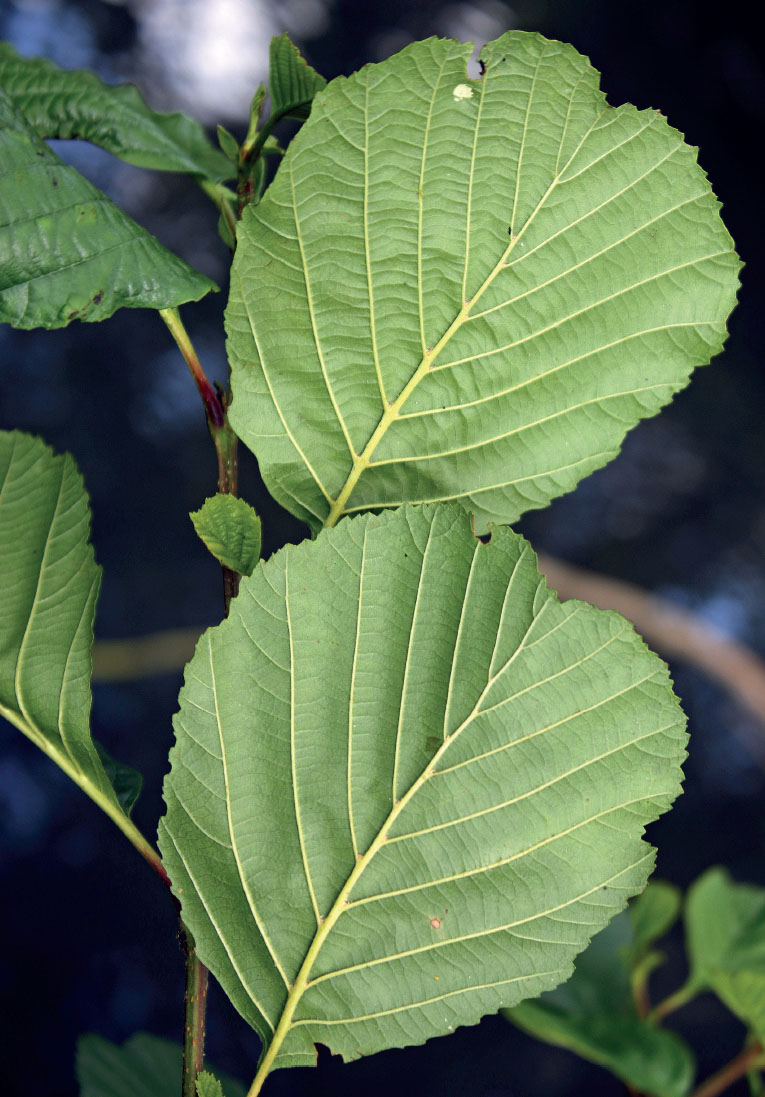
Distinctive leaves of common alder.
A lder or aller was a valuable tree to our ancestors. All parts of it were exploited to make dyes, including the leaves, bark, wood, catkins and twigs, and they produced a variety of colours yellow, green, brown, black and red depending upon the dyeing technique. Sixteenth-century herbalist John Gerard explained that the bark is much used of poor country dyers for the dying of coarse cloth, caps, hose and such like into a black colour, whereto it serveth very well. The dried catkins were used to make an ink, and the astringent alder bark was sometimes employed in the leather industry for tanning.
The tree grows mainly in damp conditions the seventeenth-century writer John Evelyn described it as the most faithful lover of water and boggy places. When freshly cut, the timber has a characteristic bright orange colour, and although not as extensively used as many other woods, alder has some useful properties. It was soon discovered, for example, that the timber itself was particularly suited to wet conditions where it could retain its integrity for long periods. Neolithic people in the UK are known to have laid down alder logs to support raised structures in the water such as jetties. In the west of England, a Neolithic walkway known as Abbots Way was constructed to cross the boggy Somerset Levels in safety. Just over 2.5 kilometres long, it joined the sand island of Burtle with the rock island of Westhay and comprises over 30,000 split alder logs or planks.
Font size:
Interval:
Bookmark:
Similar books «A History of Trees»
Look at similar books to A History of Trees. We have selected literature similar in name and meaning in the hope of providing readers with more options to find new, interesting, not yet read works.
Discussion, reviews of the book A History of Trees and just readers' own opinions. Leave your comments, write what you think about the work, its meaning or the main characters. Specify what exactly you liked and what you didn't like, and why you think so.

